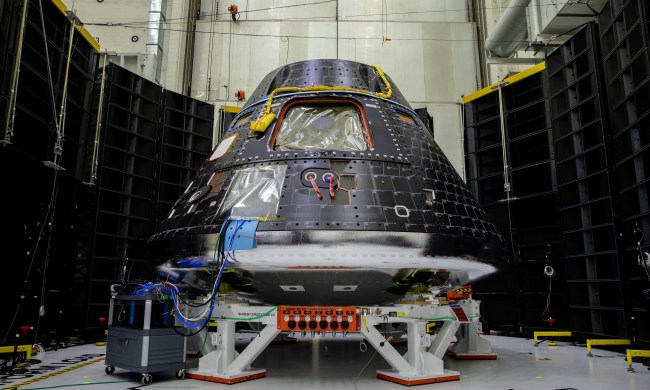Just as NASA’s uncrewed Orion spacecraft is about to reach a record distance from Earth for a human-rated spacecraft, the European Space Agency has released some awesome footage showing its recent launch from the Kennedy Space Center in Florida.
The unusual angle comes via a camera attached to the Orion spacecraft at the top of the Space Launch System (SLS) rocket. Looking directly down, we see the engines fire up and lift the rocket and spacecraft toward space, and onward to the moon (for the Orion, at least).
The clip lasts 3 minutes and 33 seconds, but the engines don’t fire up until the 3-minute mark, so unless you enjoy long buildups, then just drag the time slider to the right.
#ICYMI 😮 unusual view of the #Artemis I launch, from an onboard camera!
😮 You can fast forward to ignition at 3.00, BUT the wait IS worth it! @esaspaceflight @NASAKennedy @NASA_Orion @AirbusSpace pic.twitter.com/xxPw57FwxS
— European Space Agency (@esa) November 27, 2022
The launch on November 16 made the SLS rocket the most powerful booster to get off the ground. Packing around 8.8 million pounds of thrust, the SLS is more powerful than the Saturn V rocket that sent astronauts toward the moon in the late 1960s and early ’70s.
However, when SpaceX finally launches its next-generation Super Heavy rocket — an event expected to take place in the coming months — its power will dwarf that of the SLS, with around 17 million pounds of thrust pushing the first-stage booster and second-stage Starship spacecraft to orbit.
Powerful rockets are necessary to accelerate a spacecraft fast enough to beat the pull of Earth’s gravity and send it on a precise trajectory to its destination. It also allows spacecraft to carry greater loads into space, which is vital if we’re going to transport materials to the moon and beyond to build bases for long-term astronaut stays.
For now, NASA is focused on the current Orion mission as it tests the hardware for an upcoming crewed mission taking the same route. So far, Orion appears to have been performing well as it orbits the moon. The mission is scheduled to finish on December 11 when the spacecraft splashes down off the coast of California.
Before that, on Monday, November 28, Orion will reach its furthest point from Earth, traveling to a point about 272,515 miles from our planet.


